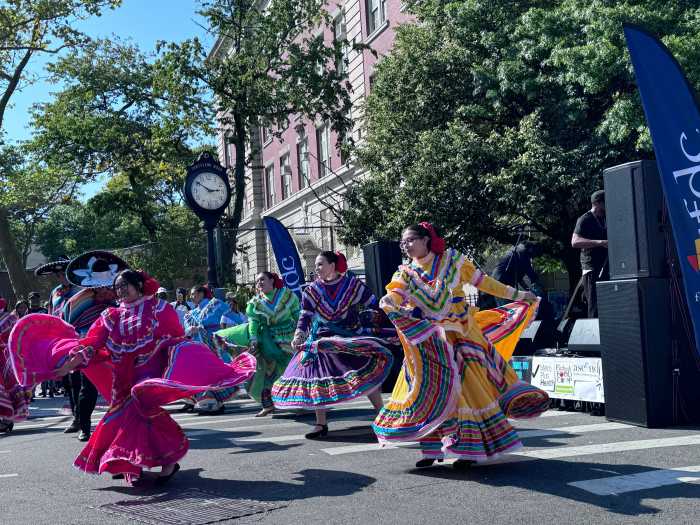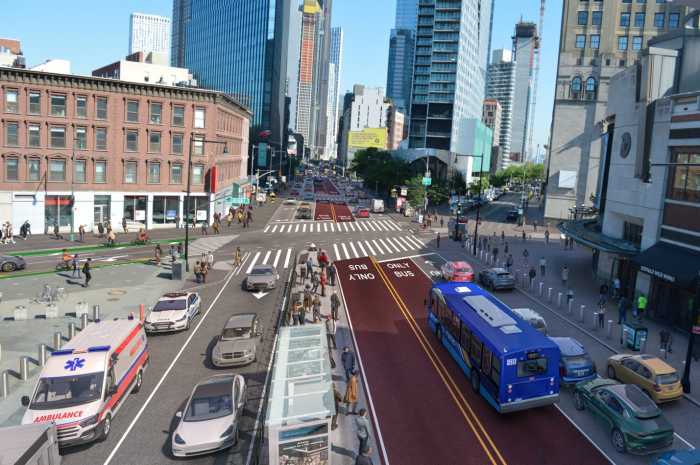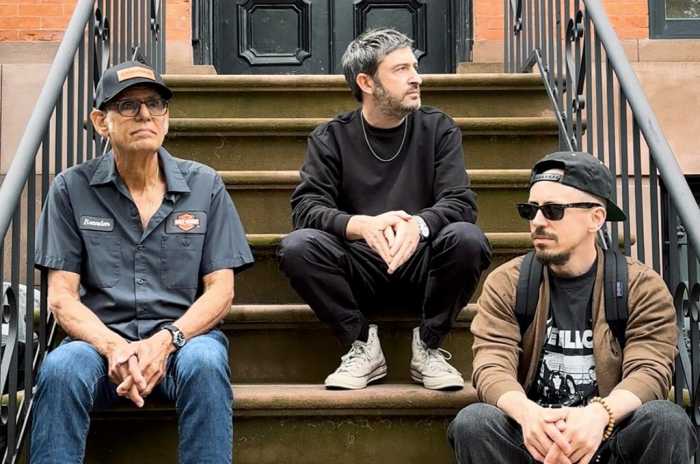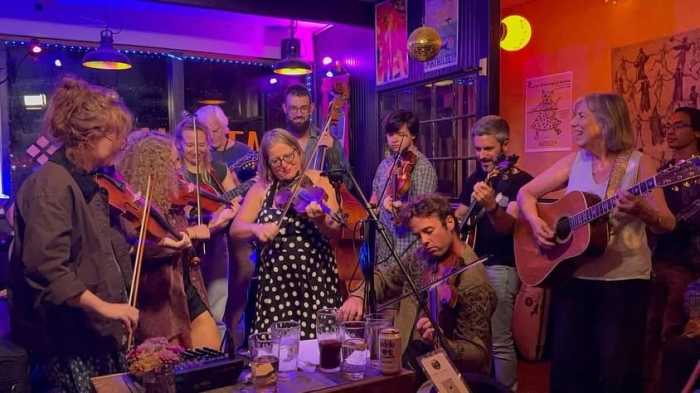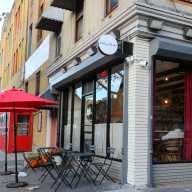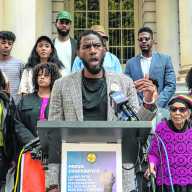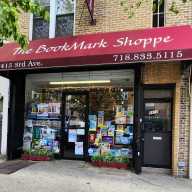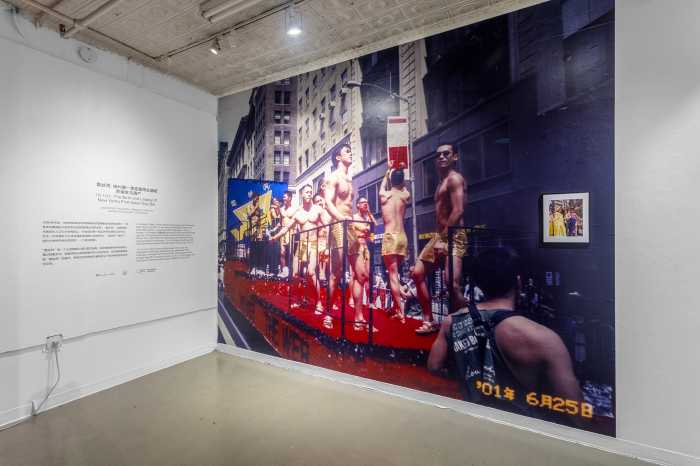Creating a bus rapid transit route along Nostrand Avenue has been vaunted as a way of streamlining the commute for the tens of thousands of riders who utilize the B-44 bus to get to and from work.
However, business owners along the strip are worried that the change will negatively impact them — a double whammy in a weak economy.
Specifically, the members of the Nostrand Avenue Merchants Association (NAMA), which represents stores between Eastern Parkway and Linden Boulevard, were so concerned about the impending change that, late last month, they held a rally at Nostrand Avenue and Fulton Street to draw attention to their worries.
“We will be losing parking spaces and increasing congestion,” contended Lindiwe Kamau, NAMA’s president, who said that merchants along Fordham Road in the Bronx, where a BRT pilot project is currently underway, had told the Nostrand Avenue businesspeople that the BRT pilot had“adversely affected their business.”
This, she said, was because an entire lane was dedicated to the BRT pilot on Fordham Road.
“I understand the benefits of BRT,” noted City Councilmember Letitia James, who joined the merchants at the protest. “I know the B-44 is unreliable. I know the Straphanger’s Campaign rated it low in terms of service. But, I also understand that small businesses are suffering in this recession, and I don’t want to do anything that will make it worse. I am trying to balance both interests. My concern is to improve mass transit and help businesses, so it’s a win-win. My objective is to get it right.”
The pilot — which is scheduled to begin in 2012 — will be implemented differently along Nostrand and Rogers Avenues, between Flushing and Flatbush Avenues, according to the city’s Department of Transportation (DOT). Rather than taking up one curbside lane as was done in the Bronx, the agency explained, the BRT will require the conversion of a moving traffic lane into a dedicated bus lane, something which could increase congestion, the merchants fear, and which also would require curbside stations at regular intervals.
“The curb lane is going to be compromised at some points,” Kamau stressed. Kamau also noted that the city had instituted no parking between 4 p.m. and 7 p.m. along Nostrand Avenue to facilitate the movement of traffic during the evening rush hour because of the congestion along the thoroughfare. “They are now talking about tying up a lane, all day long, and the same situation exists,” she remarked.
As for loss of parking, DOT contends that it will implement the BRT pilot with a minimal impact on parking. However, a diagram of the lane configuration indicates that, on the 15 blocks with BRT stops, approximately half the parking lane will be lost.
The potential loss of parking is an “issue,” James stressed. “We need to keep the businesses on Nostrand Avenue alive,” she said. “They implemented BRT in the Bronx prior to the downturn, and the businesses there felt it immediately.”
Kamau agreed. Currently, she said, merchants suffer if shoppers can’t park. Those that get tickets don’t come back, she contended. And, she noted, “We already have an unprecedented number of closed storefronts because of the economy. We are concerned we will have more.”
The merchants are also worried about the unknown. DOT, said Kamau, had “still not laid out the exact proposal,” and had declined to meet with the merchant group prior to Election Day, though a meeting is now scheduled for early in December.
“All of this is happening and no one is speaking to us, the merchants and residents who have been adversely affected by ticketing because of the lack of parking space,” Kamau told this paper.
The lack of communication with the community up till now also concerns James. “The discussion has been happening in City Hall and Borough Hall, not in the community with those who will be impacted most — the merchants, residents and riders,” she stressed. While, she noted, “DOT has indicated to me that the implementation in Brooklyn will be different from that in the Bronx,” James emphasized, “The merchants need to hear that from DOT, not from me.”
According to DOT, among the features of the pilot project are widening of sidewalks at the 15 BRT stops so the bus does not need to pull over to the curb lane, and off-bus fare collection so that, when the bus arrives, commuters can get right on board. BRT buses also will have traffic-signal priority, whereby traffic lights change to green or stay green as the bus approaches. According to the agency, the implementation of the BRT pilot along Fordham Road has decreased commuting time by almost 20 percent. According to DOT, 41,446 people utilize the B-44 on an average weekday.



